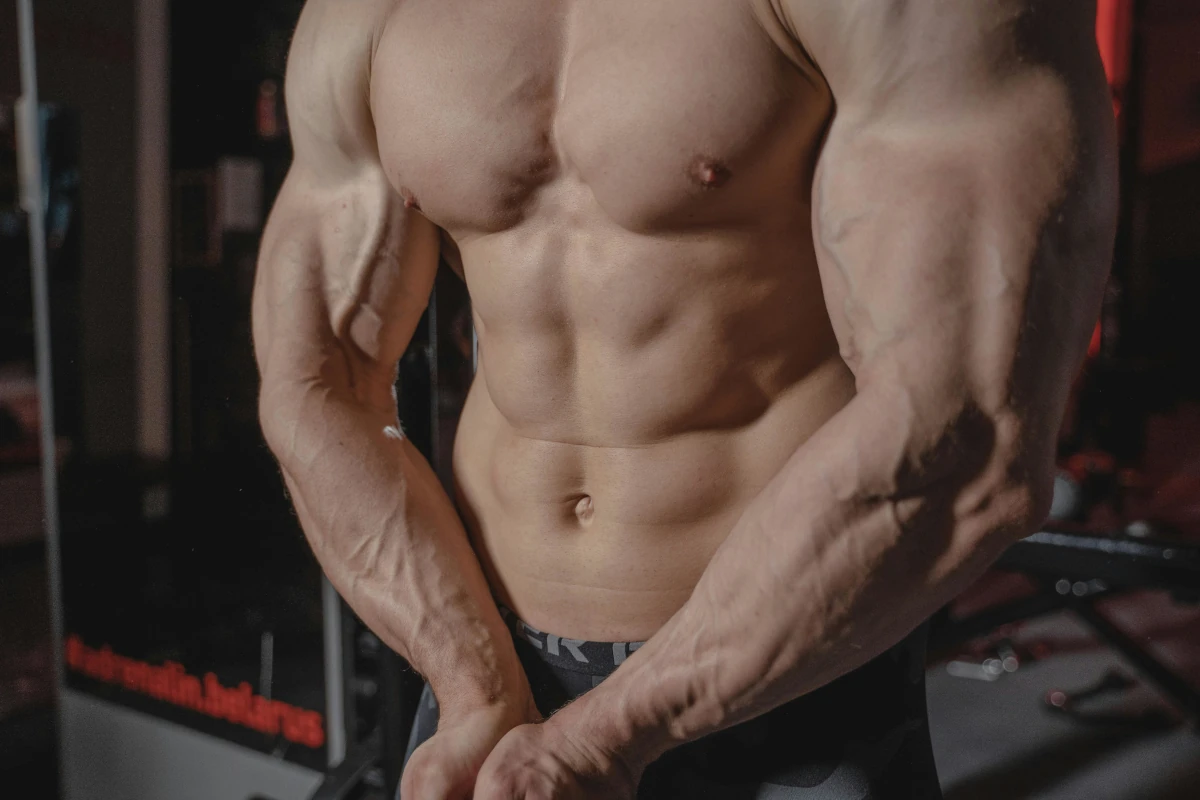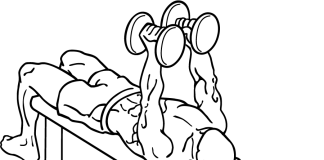Last Updated on February 26, 2025
When it comes to building muscle, one of the most debated topics in the fitness world is whether high reps or low reps are more effective for muscle growth. Both approaches have their advocates, and understanding the science behind each can help you optimize your training program for maximum gains. In this comprehensive blog, we’ll explore the benefits of high reps vs. low reps, the science behind muscle hypertrophy, and how to incorporate both into your workout routine for optimal results.
Understanding Muscle Hypertrophy
Before diving into the high reps vs. low reps debate, it’s essential to understand the concept of muscle hypertrophy. Muscle hypertrophy refers to the increase in muscle size due to the enlargement of muscle fibers. This process is primarily driven by mechanical tension, muscle damage, and metabolic stress—three key factors that stimulate muscle growth.
- Mechanical Tension: This is the force generated by muscle fibers when they contract against resistance. Higher weights typically generate more mechanical tension.
- Muscle Damage: Microscopic damage to muscle fibers during exercise triggers a repair process that leads to muscle growth.
- Metabolic Stress: The buildup of metabolites like lactate during high-rep, lower-weight sets can also contribute to muscle growth.
High Reps vs. Low Reps: What’s the Difference?
High Reps (12+ Reps per Set)
High-rep training typically involves performing 12 or more repetitions per set with lighter weights. This style of training is often associated with endurance and muscular endurance, but it can also contribute to muscle growth, especially when taken to or near failure.
Benefits of High Reps:
- Increased Metabolic Stress: High-rep sets create a significant buildup of metabolites, which can stimulate muscle growth.
- Improved Muscle Endurance: High-rep training enhances your muscles’ ability to sustain effort over time.
- Joint-Friendly: Lighter weights reduce the strain on joints, making high-rep training a safer option for those with joint issues.
Low Reps (1-6 Reps per Set)
Low-rep training involves performing fewer repetitions (typically 1-6) with heavier weights. This style of training is often associated with strength and power, but it can also contribute to muscle growth, particularly in terms of increasing muscle fiber size.
Benefits of Low Reps:
- Increased Mechanical Tension: Heavier weights generate more mechanical tension, which is a primary driver of muscle growth.
- Strength Gains: Low-rep training is highly effective for increasing maximal strength.
- Time Efficiency: Fewer reps mean shorter sets, which can make your workouts more time-efficient.
The Science Behind High Reps vs. Low Reps for Muscle Growth
Research suggests that both high-rep and low-rep training can be effective for muscle growth, but they may stimulate hypertrophy through different mechanisms.
- Low Reps (Heavy Weights): Studies have shown that lifting heavy weights (70-85% of your 1-rep max) for fewer reps can lead to significant increases in muscle size, particularly in Type II (fast-twitch) muscle fibers. These fibers have a higher potential for growth compared to Type I (slow-twitch) fibers.
- High Reps (Lighter Weights): Research also indicates that lifting lighter weights (30-60% of your 1-rep max) for higher reps can also lead to muscle growth, especially when sets are taken to failure. This is likely due to the increased metabolic stress and muscle damage associated with high-rep training.
A landmark study published in the Journal of Applied Physiology found that both high-rep and low-rep training can lead to similar levels of muscle hypertrophy, provided that sets are performed to or near failure. This suggests that the key to muscle growth is not necessarily the number of reps or the amount of weight lifted, but rather the intensity of effort.
How to Incorporate Both High Reps and Low Reps into Your Training
Given that both high-rep and low-rep training can be effective for muscle growth, the best approach is to incorporate both into your workout routine. Here’s how you can do it:
1. Periodization
Periodization involves cycling through different phases of training, each with a specific focus. For example, you could spend 4-6 weeks focusing on low-rep, heavy-weight training to build strength, followed by 4-6 weeks of high-rep, lighter-weight training to increase metabolic stress and endurance.
2. Hybrid Training
Another approach is to combine both high-rep and low-rep training within the same workout. For example, you could perform compound lifts like squats, deadlifts, and bench presses with low reps and heavy weights, followed by isolation exercises like bicep curls, tricep extensions, and lateral raises with higher reps and lighter weights.
3. Drop Sets
Drop sets are a great way to incorporate both high-rep and low-rep training into a single set. Start with a heavy weight and perform low reps until you reach failure, then immediately reduce the weight and continue with high reps until you reach failure again.
4. Rest-Pause Training
Rest-pause training involves performing a set of low reps with a heavy weight, resting for a short period (10-20 seconds), and then performing additional reps with the same weight. This allows you to accumulate more volume with heavy weights, which can be beneficial for muscle growth.
Practical Tips for Maximizing Muscle Growth
- Progressive Overload: Regardless of whether you’re doing high reps or low reps, the key to muscle growth is progressive overload. This means gradually increasing the weight, reps, or sets over time to continue challenging your muscles.
- Train to Failure (Occasionally): Training to failure can be an effective way to maximize muscle growth, but it should be used sparingly to avoid overtraining. Aim to take at least some of your sets to failure, particularly during high-rep training.
- Focus on Form: Proper form is crucial for both high-rep and low-rep training. Poor form can lead to injuries and reduce the effectiveness of your workouts.
- Nutrition and Recovery: Muscle growth doesn’t happen in the gym—it happens during recovery. Ensure you’re consuming enough protein, calories, and nutrients to support muscle growth, and prioritize sleep and rest days.
Conclusion: High Reps or Low Reps for Muscle Growth?
So, is high reps or low reps better for muscle growth? The answer is both. High-rep and low-rep training each have unique benefits and can contribute to muscle hypertrophy through different mechanisms. The most effective approach is to incorporate both into your training program, using periodization, hybrid training, or techniques like drop sets and rest-pause training to maximize your gains.
Remember, the key to muscle growth is not just the number of reps or the amount of weight you lift, but the intensity of effort and the consistency of your training. By combining high reps and low reps, focusing on progressive overload, and prioritizing nutrition and recovery, you can optimize your workouts for maximum muscle growth.







